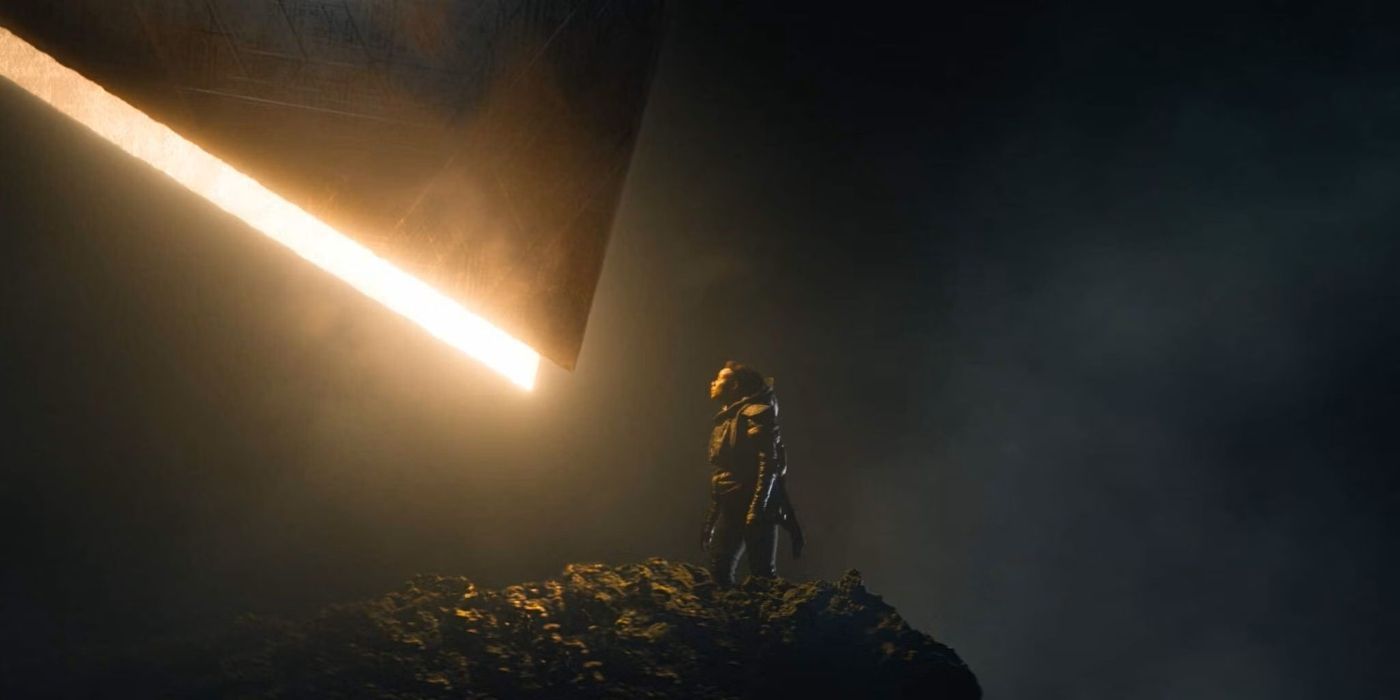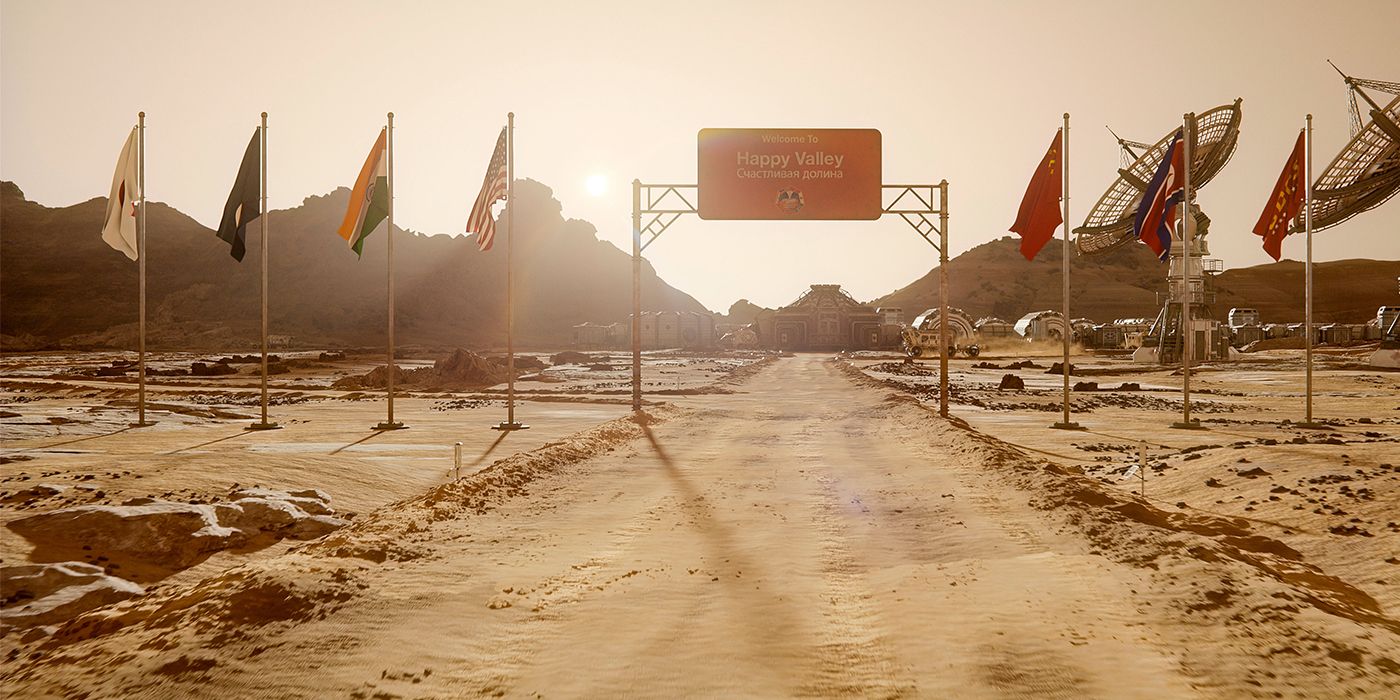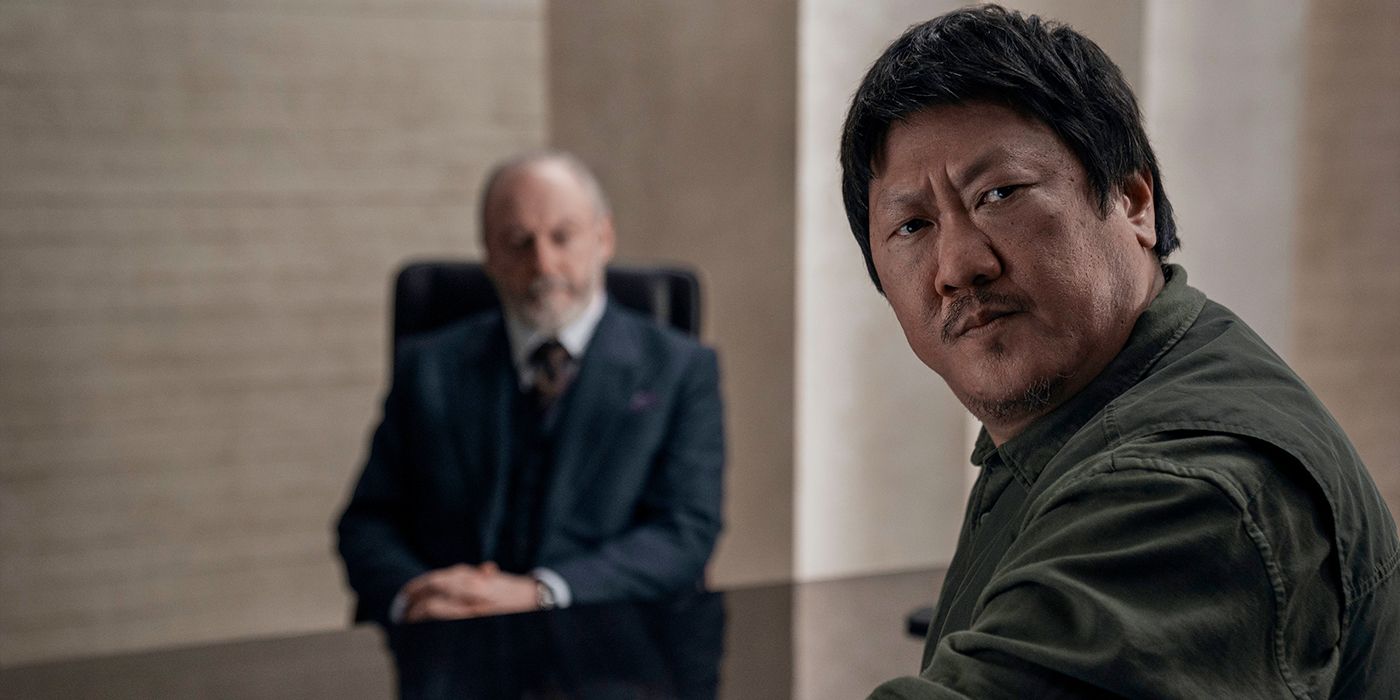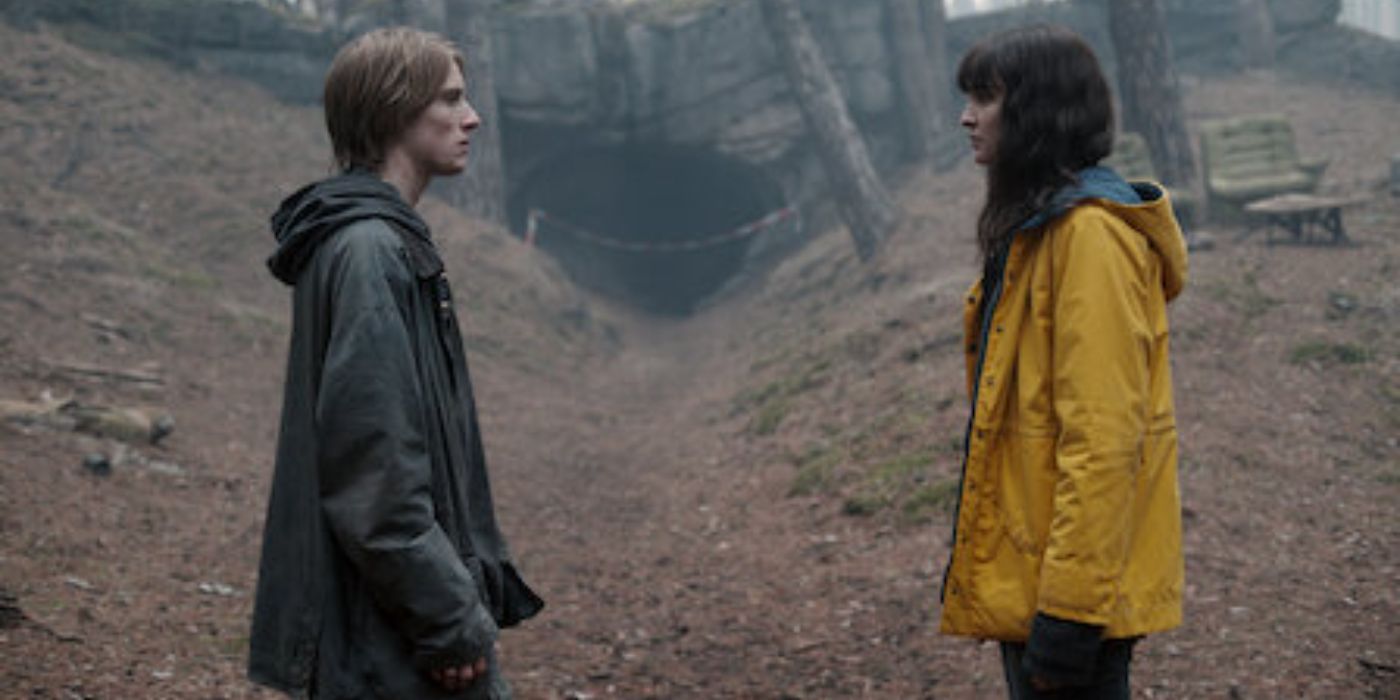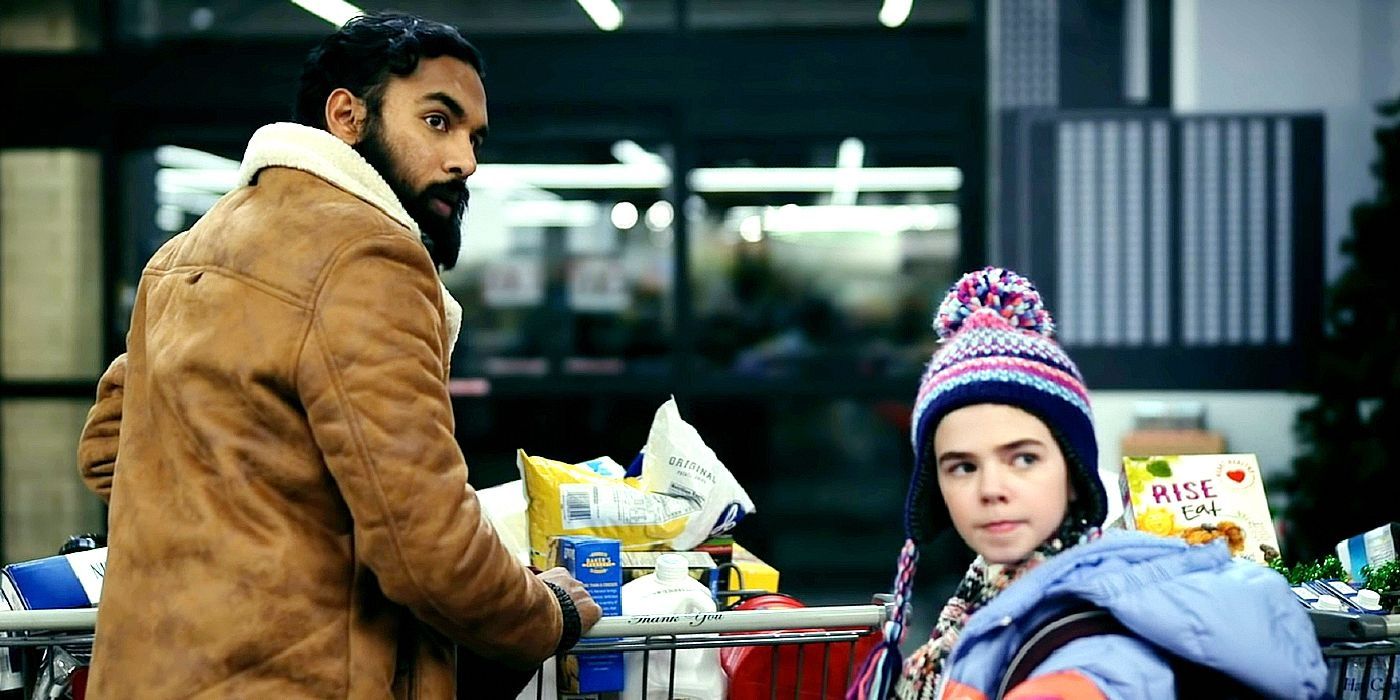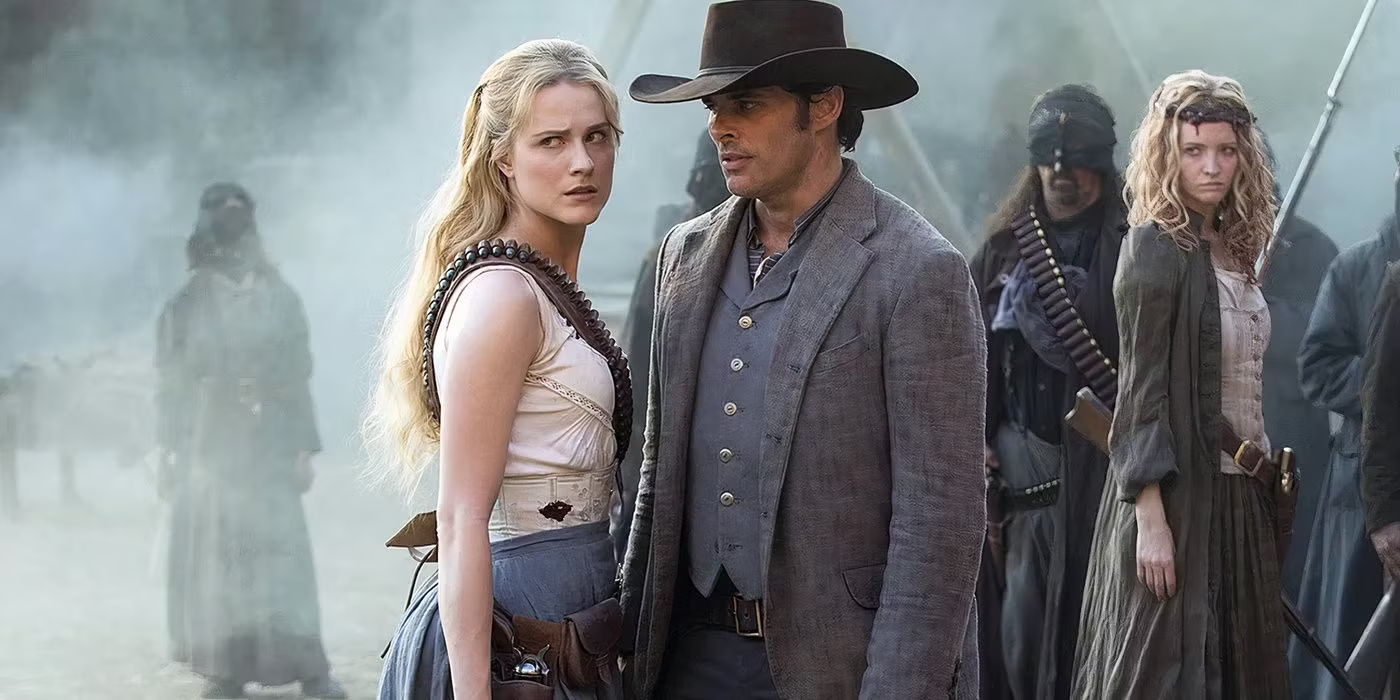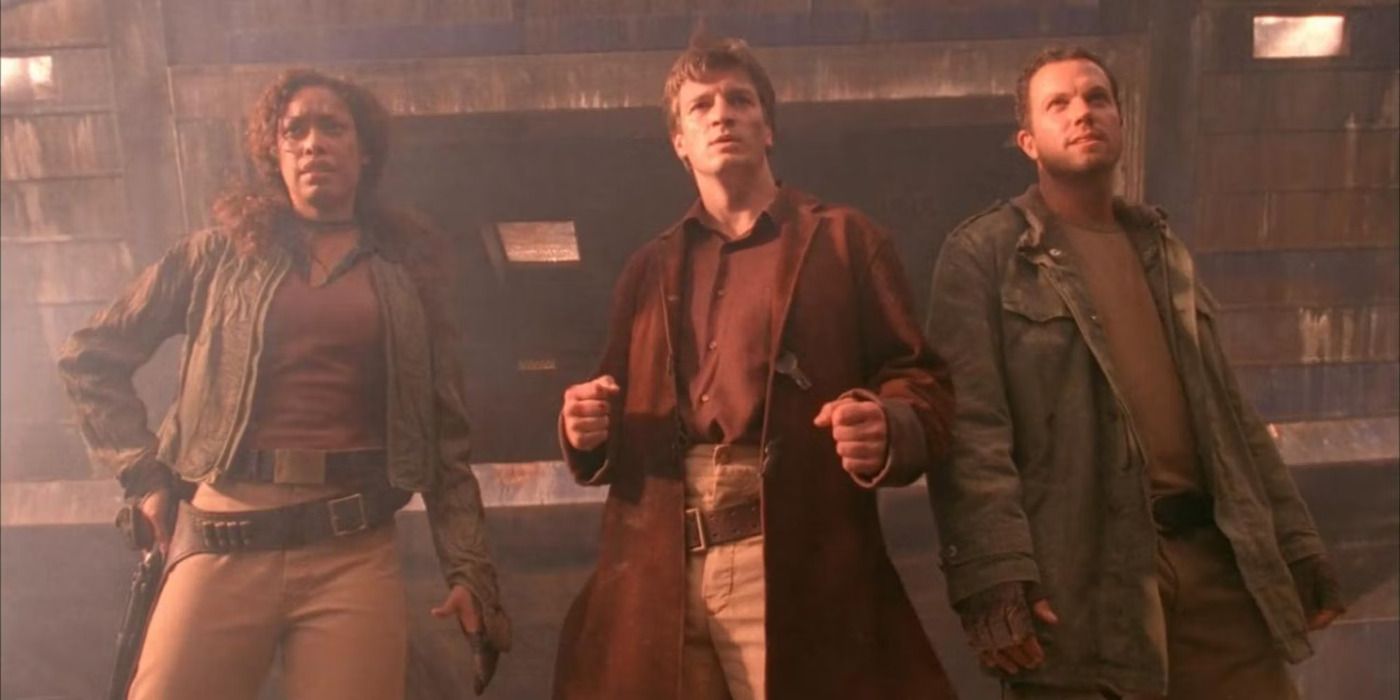
Since its release in 2014, Interstellar has become somewhat of a modern classic of its genre. Ten years later, it is often cited as one of the best sci-fi movies of all time. The film’s strength, in part, comes from its worldbuilding and use of conventional sci-fi tropes. But there are also more existential themes, like how the power of love and familial bonds can help us survive.
While it can be difficult to translate Christopher Nolan’s record-breaking sci-fi epic to the small screen, these TV shows are comparable; they can be enjoyed in multiple sittings and have more time with the characters. Space operas like The Expanse and Foundation depict advanced intergalactic societies grappling with man’s hubris for progress. Meanwhile, Westworld and Black Mirror offer more subtle comparisons through the connection between humans and technology. Check out these great TV shows if you’re a fan of Interstellar.
10
‘The Expanse’ (2015-2022)
Created by Mark Fergus and Hawk Ostby
Humanity’s interstellar survival is already established by the first episode of The Expanse, where a society exists much like ours only 200 years in the future. In the backdrop, impending war resides over the Laconian Empire threatening this advanced intergalactic civilization. But when a prominent woman goes missing within the solar system, the crew of Rocinante must work together with a political diplomat to locate her – revealing secrets about humanity’s origins (or their destruction).
The greatest similarity between The Expanse and Interstellar is the presence of wormholes. In the series, The Ring was placed by an ancient civilization far into the past, which makes space travel more efficient. Much like Interstellar’s wormhole, the structure is masked in the unknown. Who placed The Ring and why? This mystery is explored in both Interstellar and The Expanse, as it relates to humanity’s origins.
9
‘Foundation’ (2021-)
Created by David S. Goyer and Josh Friedman
Based on Isaac Asimov’s collection of stories of the same name, The Foundation follows the decline of the Galactic Empire – and the events that can stop it. When mathematician Hari Seldon (Jared Harris) proposed a profound mathematical equation – “psychohistory” – it was believed that this theory could be used to predict the coming collapse. However, this foresight might not even matter when dealing with the tyranny of a man who has ruled for 1,000 years.
Hari’s discovery is more sociological, exemplifying the foundation theory of assumptions through logic. Whereas the film depicts a careful sequence of Morse code that reveals data which eventually saves humanity. Still, both Interstellar and Foundation utilize scientific theory in an attempt to save the world. When it comes to numbers and concepts beyond, is this science or prophecy? Fans of Interstellar will enjoy following along with that same philosophical question when watching Foundation.
8
‘For All Mankind’ (2019-)
Created by Ronald D. Moore, Matt Wolpert, and Ben Nedivi
AppleTV+ houses some of the best sci-fi television, and For All Mankind is no different. This 2019 series exists in an alternate reality that sees the Soviet Union reign victorious over the 1960s mission to the moon. Ultimately, For All Mankind is an epic story of a dystopian world combining fictional storytelling and actual history to explain what could have been.
Whereas Cooper (Matthew McConaughey) and his team hope to discover alternate universes to inhabit, Ed Baldwin (Joel Kinnamen) finds himself in an actual alternate universe – one where the Cold War space race never ended. Both astronauts seek out newer and better worlds, relying on their connections on Earth and to their families in the process. A spinoff, Star City, is currently in the works, expanding the universe just as the characters in For All Mankind have done by venturing further into space.
7
‘3 Body Problem’ (2024-)
Created by David Benioff, D. B. Weiss, and Alexander Woo
The 3 Body Problem flawlessly blends the past, present, and future into one cohesive story. The Emmy Award-winning series is based on Liu Cixin’s book series, Remembrance of Earth’s Past, in an adaptation that brings the author’s physics theory to the small screen. When scientists are met with an ancient alien civilization, they attempt to locate where they came from before it’s too late.
How do these mysterious beings connect to the present day, and can the concept of the 3 body problem offer insight into how to stop them in the face of imminent catastrophe? There’s a line in the show spoken by Da Shi (Benedict Wong), “Back in 1977, they detected a sequence… called it “Wow!” sequence.” Like Interstellar, 3 Body Problem attempts to use clues from the past in an attempt to alter an uncertain future.
6
‘Dark’ (2017-2020)
Created by Baran bo Odar and Jantje Friese
Netflix’s hit German series, Dark, takes place across three time periods: 1953, 1986, and 2019. This cerebral interpretation of time travel results in recurring causal loops affecting multiple generations of families in a small town. Everything is connected (and affected) by previous decisions and actions. But when a young boy suddenly vanishes, the town begins to uncover a larger conspiracy.
Nolan famously consulted with astrophysicists when creating Interstellar to ensure that there is a basis in scientific accuracy; the wormhole that Cooper’s team travels through is the most notable example of this. Like Interstellar (and similar to other series like The Expanse), Dark relies on its version of a wormhole to explain the mysterious events that unfold. Where Interstellar has Murphy’s Law (“Whatever can happen will happen.”), Dark explains this concept through the “bootstrap paradox” (a causal loop).
5
‘Station Eleven’ (2021-2022)
Created by Patrick Somerville
After society is dismantled and the population declines following a flu epidemic, survivors must rebuild what is left. Station Eleven is told from two perspectives – before “the collapse” and the aftermath over the course of nineteen years. Audiences see this new world through the eyes of a nomadic group of actors and musicians.
Beyond Interstellar’s space travel and beautiful cinematography lies a harsh truth: the planet is dying and humanity must be saved. It’s both a sci-fi and dystopian movie, in this sense. Similarly, Station Eleven offers a chilling message of normalcy before and after a disaster, and what people will do to survive – together.
4
‘Black Mirror’ (2011-)
Created by Charlie Brooker
This anthology explores our relationship with technology – often detrimentally. Various episodes of Black Mirror this. Perhaps the best example is “San Junipero,” a heartwarming (and heartbreaking) standalone story that sees characters grappling with actual and simulated worlds, and whether to abandon their reality for a supposed better life – something Cooper also grapples with before leaving on his mission.
In Interstellar, the reliance on technology and science is important for finding inhabitable planets, and Cooper even comes to befriend TARS. Without the robot, Cooper would never have survived the tesseract or communicated with Murphy (Jessica Chastain) through their close relationship. When is it a good thing to rely on technology, and when does it become harmful?
3
‘Westworld’ (2016-2022)
Created by Jonathan Nolan and Lisa Joy
Based on the 1973 film, HBO’s Westworld follows both humans and robots and asks the audience just how different the two are. Set in the 19th century Wild West, artificially intelligent androids are each programmed with their own backstory and motivations, running on a loop for park-goers to enjoy as entertainment. It’s not until the androids grow more self-aware that their creators question just how different the androids are from them.
What does it mean to be human? Is it our memories? The interpersonal connections built and maintained? This idea is presented through the human-like machines in Westworld. Both Westworld and Interstellar ask these questions as they relate to the human condition.
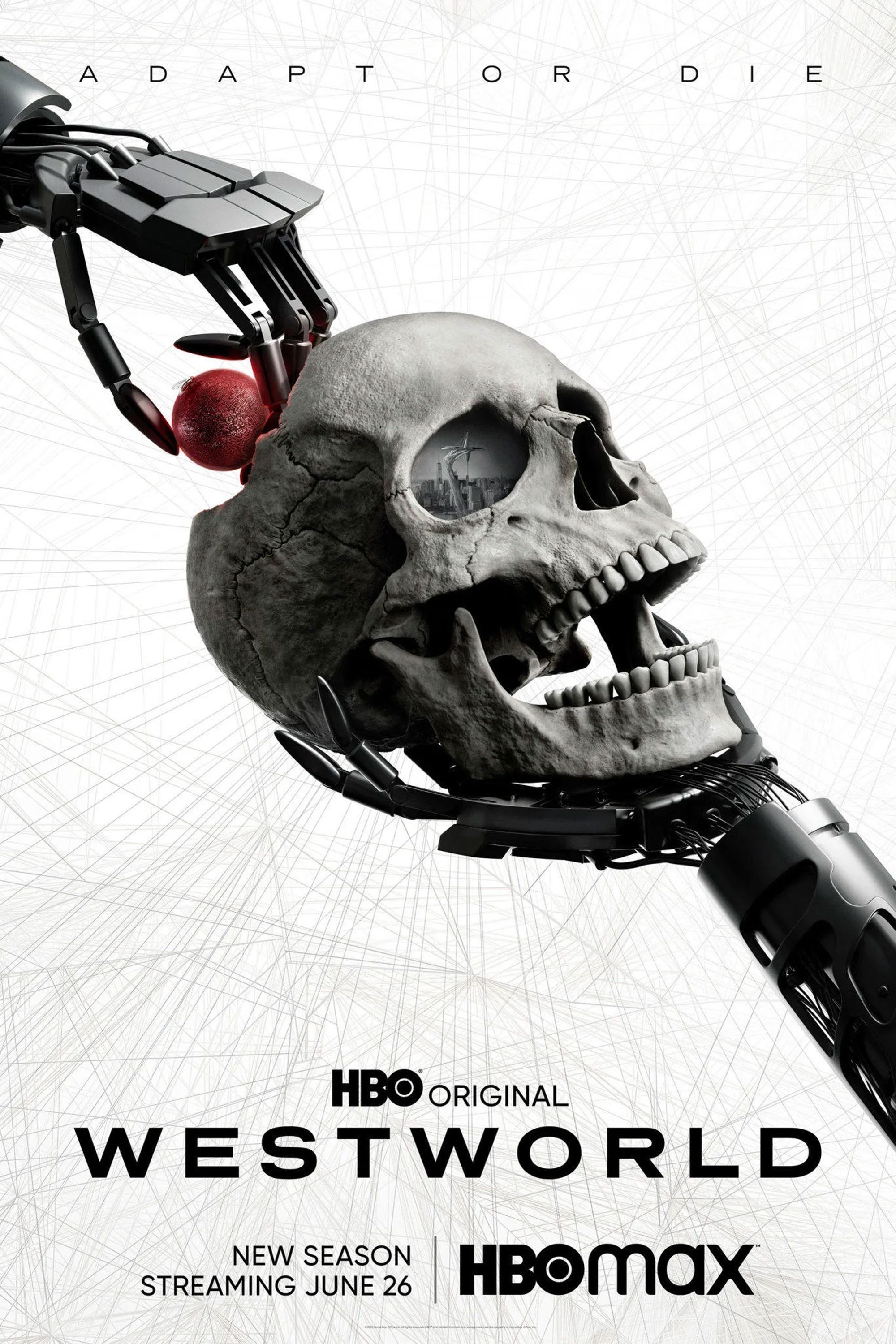
Westworld
- Release Date
-
2016 – 2021
- Network
-
HBO Max
- Showrunner
-
Jonathan Nolan, Lisa Joy
2
‘Firefly’ (2002-2003)
Created by Josh Whedon
Aboard the spaceship Serenity, a crew of nine explorers traverses a newly discovered star system 500 years in the future. While they must work together on their journey, each character’s motivations differ. Firefly is a cult classic and a proper example of a space Western, taking fans on adventures for 14 episodes. Unfortunately, Firefly’s abrupt cancelation resulted in a cliffhanger. Over 20 years later, fans still hope for a revival.
Like Firefly, some of Interstellar’s most profound moments occur on the ship as Cooper and his team traverse the universe in search of a new host planet. They must work together to achieve their intended mission and sacrifice lives for the sake of saving time. It’s this human bond with Serenity that puts human life into perspective in an existential way.
1
‘Years and Years’ (2019)
Created by Russell T Davies
A severely underrated HBO miniseries, Years and Years takes place over roughly 30 years in the UK and globally. Throughout this time, the extended Lyons family finds themselves increasingly intertwined with political, environmental, social, and economic turmoil taking place. These changes are subtle; it’s not until they reach 2034 that audiences understand just how much the characters endured.
Years and Years is fictional yet all too realistic. The show sends the message that, despite ongoing events around the world that suggest their world is moving closer to dystopia, the interconnectedness of the Lyons family allows them to move forward with their lives considering the circumstances. This universal theme of love conquering hopelessness is apparent in both Years and Years and Interstellar.

